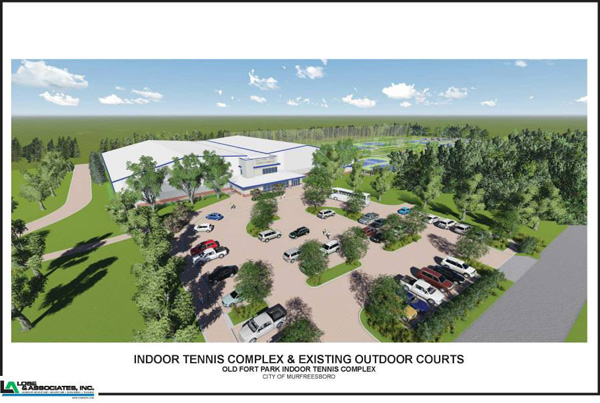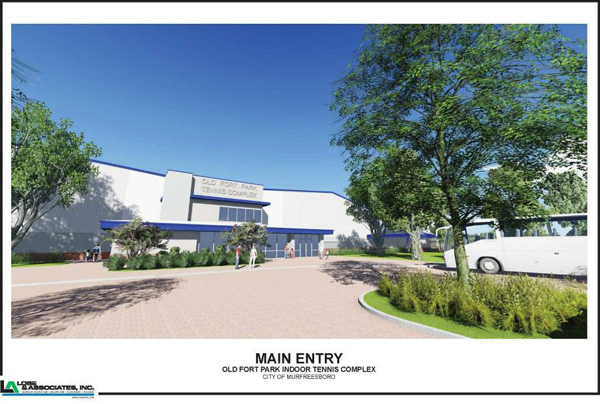
Tennis has always been a summer sport in Murfreesboro—but that’s about to change. Set to open this spring, the city’s new eight-court indoor tennis center will revolutionize the way the game is played in Rutherford County.
The new tennis center was originally scheduled to open on Jan. 10, 2015, but construction was delayed due to poor weather conditions. Now, the courts are expected to open to the public in early April (though additional weather delays may change the timing slightly).
One function of new center will be to allow the MTSU men’s and women’s tennis teams the opportunity to practice all winter long, without having to commute an hour each way up to Nashville to do it.
“Tennis is usually played outside only when it is 50 degrees or above, and dry,” explains MTSU men’s tennis head coach Jimmy Borendame.
Before becoming the head coach at MTSU, Borendame was head coach at Drake College in Des Moines, Iowa, following a stint as associate head coach at Virginia Tech. He took over the MTSU teams in August 2010. Borendame has been an essential part of the process of getting the new tennis center built. Since prior to being hired he has insisted upon significant effort being made towards the center’s creation.
“Coaches have been trying to get this built for 10 years,” he says—but he’s the one who succeeded.
Borendame helped raised more than $2 million towards the cost of the center, including a $500,000 grant from the Christie Houston Foundation. The City of Murfreesboro contributed an additional $3 million towards the construction of the $5.8 million facility.
The center’s public face will be run by the Murfreesboro Parks and Recreation Department. The tennis teams will have court time six days a week from 1 to 4 p.m., with public access available during the rest of the center’s open hours. There will be a fee to use the center; the amount is still being determined. In addition to the normal fees, it is expected that memberships will be offered for discounted rates on court time. The city also plans to offer programming and lessons for all ages and experience levels.
“This is going to be a major tennis center for the South,” says Borendame. With the addition of the new indoor courts, Old Fort Park’s existing 24 courts and MTSU’s 14 courts, the city will boast a total of 46 courts within a three-mile radius. Now that the indoor courts offer an option for inclement weather, the city expects, and is actively recruiting, tournaments at the local, state, regional and even national levels.
“The city jumped on this project because of the huge economic impact,” says Borendame. He points to a tournament being recruited that will bring over 200 players to the city, all of whom will need to stay in a hotel for the weekend, eat at local restaurants and buy gas from local stores. He also expects the top-of-the-line facility and programming to increase the number of local tennis players and may even help to attract new businesses due to the increased quality of living for employees that such a center provides.
The center will also undoubtedly increase quality of life for Borendame and his student athletes. Two hours of commuting—six days a week, on top of a three-hour practice—hasn’t stopped the team from earning the status of ITA All-Academic Team from 2011 to 2013. Still, having an indoor option in town will ease the players’ schedules significantly, as well as making MTSU’s tennis program more attractive to new recruits. “And,” adds Borendame, “I’m looking forward to spending more time with my family.”













